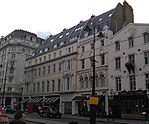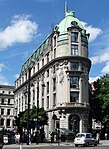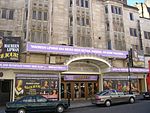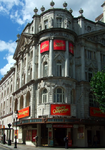Live! (Bob Marley and the Wailers album)
1975 live albumsAlbums produced by Chris BlackwellBob Marley and the Wailers live albumsCertification Table Entry usages for AustriaCertification Table Entry usages for France ... and 8 more
Certification Table Entry usages for GermanyCertification Table Entry usages for NetherlandsCertification Table Entry usages for SwitzerlandCertification Table Entry usages for United KingdomCertification Table Entry usages for United StatesIsland Records live albumsTuff Gong albumsUse Jamaican English from February 2014
Live! is a 1975 album by Bob Marley and the Wailers which was recorded live in concert during July 1975 at the Lyceum Theatre, London. "No Woman, No Cry (Live '75)" was released as a single.
Excerpt from the Wikipedia article Live! (Bob Marley and the Wailers album) (License: CC BY-SA 3.0, Authors).Live! (Bob Marley and the Wailers album)
Birger Brunilan puistokuja, Helsinki Kaisaniemi (Eteläinen suurpiiri)
Geographical coordinates (GPS) Address Nearby Places Show on map
Geographical coordinates (GPS)
| Latitude | Longitude |
|---|---|
| N 51.511556 ° | E -0.11975 ° |
Address
Leikkipaikka Kaisaniemi
Birger Brunilan puistokuja
00014 Helsinki, Kaisaniemi (Eteläinen suurpiiri)
Finnland
Open on Google Maps











